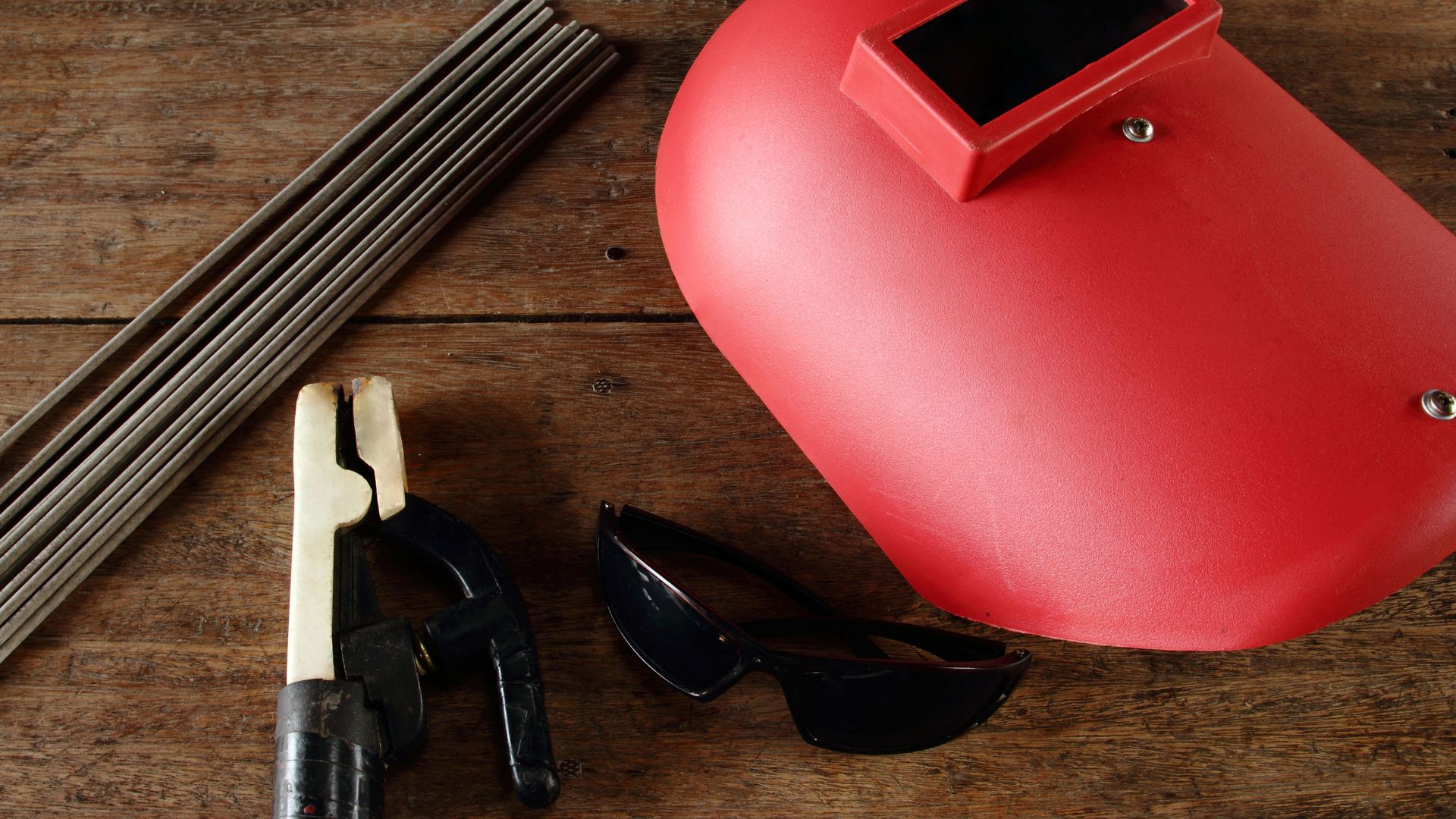Izbira ustrezne varilne opreme je ključnega pomena za zagotavljanje uspeha vsakega varilnega projekta, ne glede na to, ali gre za industrijsko proizvodnjo, gradbeništvo ali opravila "naredi sam". Prava oprema ne izboljša le kakovosti zvara, temveč tudi poveča učinkovitost in varnost. V tem članku so predstavljena ključna merila za izbiro varilne opreme glede na potrebe in specifikacije projekta.
1. Razumevanje postopkov varjenja
Pred izbiro varilne opreme je treba razumeti različne varilne postopke, ki so na voljo, in njihovo uporabo:
- Varjenje MIG (GMAW): Idealen je za hitro varjenje debelih materialov in se pogosto uporablja v avtomobilski in predelovalni industriji. Je uporabniku prijazen in zagotavlja čiste, visokokakovostne zvare.
- Varjenje TIG (GTAW): Znano je po natančnosti in nadzoru, zato je primerno za tanke materiale in zapletena dela, kot so letalske komponente in umetniški projekti.
- palično varjenje (SMAW): Vsestransko uporaben in učinkovit za delo na prostem in težke kovinske konstrukcije. Je manj občutljiv na umazanijo in rjo na kovinskih površinah.
- Obločno varjenje s fluksiranim sredstvom (FCAW): Podobno kot pri varjenju MIG, vendar je primernejše za varjenje debelejših materialov in uporabo na prostem, saj jedro fluksa zagotavlja dodatno zaščito.
2. Vrsta in debelina materiala
Vrsta in debelina varjenega materiala pomembno vplivata na izbiro varilne opreme:
- Jeklo: Najpogostejši material za varjenje. Varjenje MIG, TIG in palično varjenje so učinkoviti, izbira pa je odvisna od debeline in specifične uporabe.
- Aluminij: Zahteva posebne nastavitve in pogosto varjenje TIG za tanke materiale ali varjenje MIG s tuljavo za debelejše dele.
- Iz nerjavečega jekla: Zaradi natančnosti in nadzora je pogosto primernejše varjenje TIG, čeprav se za debelejše dele lahko uporablja tudi varjenje MIG.
3. Zahteve glede napajanja
Pri izbiri varilne opreme upoštevajte zahteve glede moči in razpoložljivost:
- Vhodna napetost: Varilni aparati so na voljo z različnimi napetostmi, kot so 110 V, 220 V in 460 V. Prepričajte se, da razpoložljivo napajanje ustreza specifikacijam opreme.
- Izhodna moč: Za varjenje debelejših materialov je potrebna večja izhodna moč. Prepričajte se, da stroj lahko zagotavlja potrebno jakost toka za vaše varilne naloge.
4. Delovni cikel
Delovni cikel varilnega stroja označuje odstotek časa, ko lahko v določenem obdobju deluje brez pregrevanja:
- Majhna obremenitev: Primeren je za manjše projekte in opravila "naredi sam" z manj pogosto uporabo.
- Srednja obremenitev: Idealen je za redno, vendar ne neprekinjeno uporabo, na primer v majhnih delavnicah.
- Težka naloga: Nujno za industrijske aplikacije, kjer je potrebno neprekinjeno varjenje.
5. Prenosljivost
Odvisno od projekta je lahko prenosljivost varilne opreme pomemben dejavnik:
- Stacionarni varilci: Običajno so zmogljivejši ter primerni za delavnice in fiksne lokacije.
- Prenosni varilci: Lahka in kompaktna, idealna za varjenje in delo na terenu.
6. Napredne funkcije
Sodobni varilni aparati so opremljeni z različnimi naprednimi funkcijami, ki izboljšujejo uporabnost in učinkovitost:
- Digitalni zasloni: Zagotovite natančen nadzor nad nastavitvami in parametri.
- Nadzor pred in po pretoku: Zagotavlja optimalno pokritost z zaščitnim plinom pred varjenjem in po njem.
- Pulzno varjenje: Uporabno za zmanjšanje vnosa toplote in izboljšanje kakovosti zvara, zlasti pri tankih materialih.
7. Zanesljivost proračuna in blagovne znamke
Čeprav je mamljivo izbrati cenovno najugodnejšo možnost, je ključnega pomena upoštevati dolgoročno zanesljivost in zmogljivost:
- Proračun: Določite svoj proračun in upoštevajte, da lahko večja začetna naložba v kakovostno opremo dolgoročno prihrani stroške, saj se zmanjšajo izpadi in vzdrževanje.
- Ugled blagovne znamke: Odločite se za priznane blagovne znamke, ki so znane
zaradi njihove zanesljivosti, podpore in razpoložljivosti rezervnih delov. Raziščite mnenja strank in povratne informacije iz panoge, da zagotovite verodostojnost blagovne znamke in kakovost storitev.
8. Posebne zahteve projekta
Vsak varilni projekt ima lahko edinstvene zahteve, ki določajo vrsto potrebne opreme:
- Delo v avtomobilski industriji: Zahteva vsestransko opremo za varjenje različnih kovin in debelin, pri čemer pogosto daje prednost varilnikom MIG zaradi njihove hitrosti in enostavne uporabe.
- Uporaba v letalstvu in vesolju: Zahteva visoko natančnost in nadzor, pri čemer so običajno potrebni varilci TIG zaradi njihove sposobnosti izdelave čistih in natančnih zvarov.
- Gradbeništvo in težka proizvodnja: Potrebuje robustne varilne aparate za težke obremenitve, kot so palični ali FCAW varilni aparati, ki lahko obdelujejo debele materiale in so primerni za delo na prostem.
9. Enostavnost uporabe in usposabljanja
Na izbiro varilne opreme mora vplivati tudi raven znanja varilca:
- Varilci začetniki: Enostavnejši stroji z uporabniku prijaznimi vmesniki, kot so osnovni varilniki MIG, so idealni za začetnike.
- Izkušeni varilci: Napredni stroji z več nadzornimi funkcijami, kot so varilniki TIG z nastavitvami impulzov, lahko izkušenim varilcem zagotovijo natančnost in prilagodljivost, ki ju potrebujejo.
10. Varnostne funkcije
Varnost je pri varjenju najpomembnejša, zato je sodobna varilna oprema opremljena z različnimi varnostnimi elementi za zaščito varilca:
- Zaščita pred toplotno preobremenitvijo: Preprečuje pregrevanje stroja, saj ga izklopi, ko se preveč segreje.
- Stabilni lok: Zagotavlja dosledno delovanje obloka, da se zmanjša tveganje napak in izboljša varnost.
- Nadzor pretoka plina: Vgrajeni mehanizmi za nadzor pretoka plina preprečujejo uhajanje plina in zagotavljajo optimalno zaščito.
Zaključek
Pri izbiri prave varilne opreme je treba skrbno oceniti različne dejavnike, vključno s postopkom varjenja, vrsto materiala, potrebami po moči, delovnim ciklom, prenosljivostjo in posebnimi potrebami projekta. Poleg tega upoštevanje naprednih funkcij, proračuna, zanesljivosti blagovne znamke, enostavnosti uporabe in varnostnih funkcij zagotavlja, da izberete opremo, ki ne izpolnjuje le vaših trenutnih zahtev, temveč zagotavlja tudi prilagodljivost za prihodnje projekte.
S temeljito oceno teh meril lahko varilci sprejemajo premišljene odločitve, ki povečujejo njihovo učinkovitost, varnost in kakovost dela. Ker se tehnologija varjenja še naprej razvija, boste s spremljanjem najnovejših dosežkov in funkcij varilcem omogočili, da se samozavestno in natančno lotijo vse bolj zapletenih in zahtevnih projektov.

